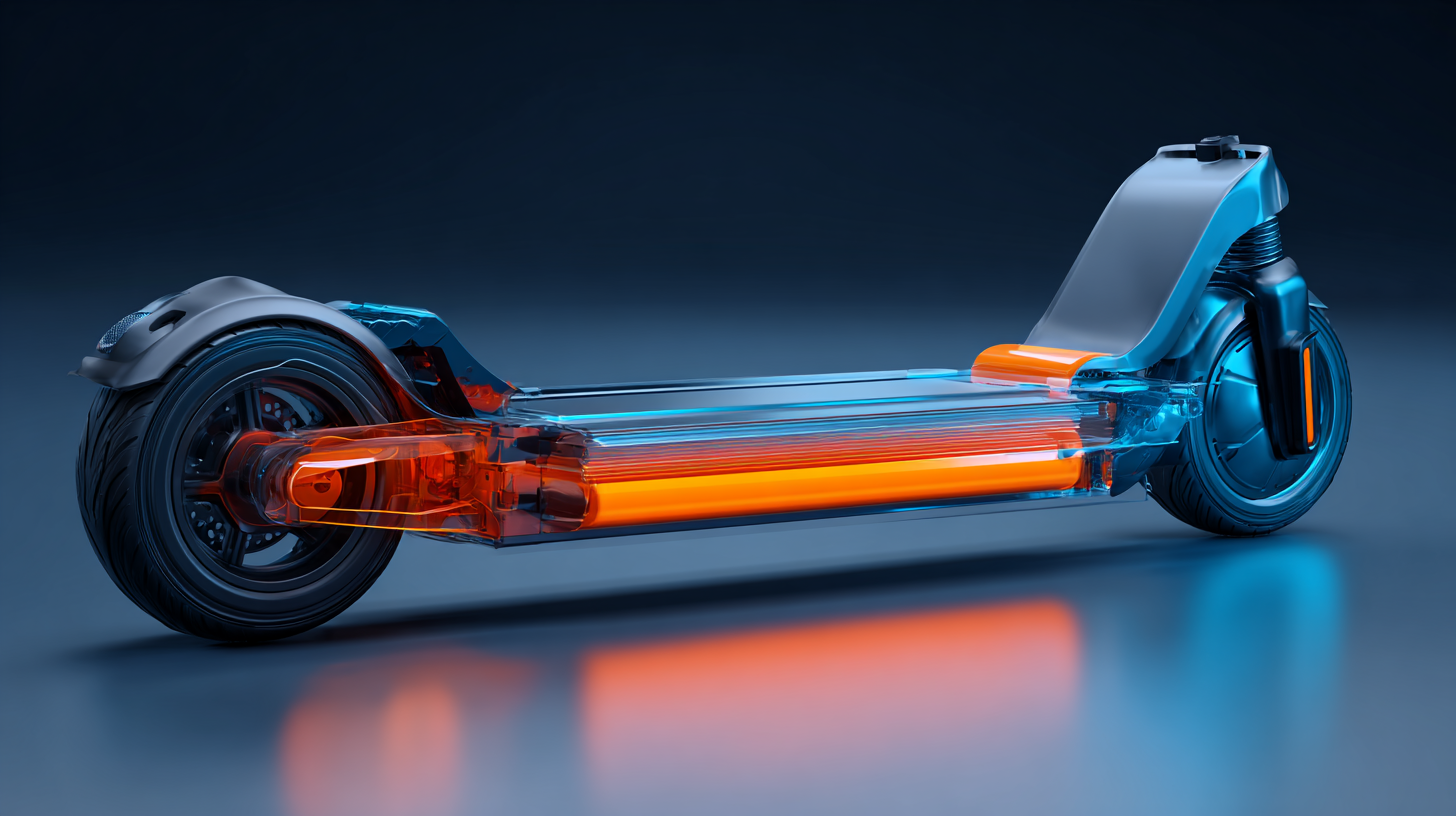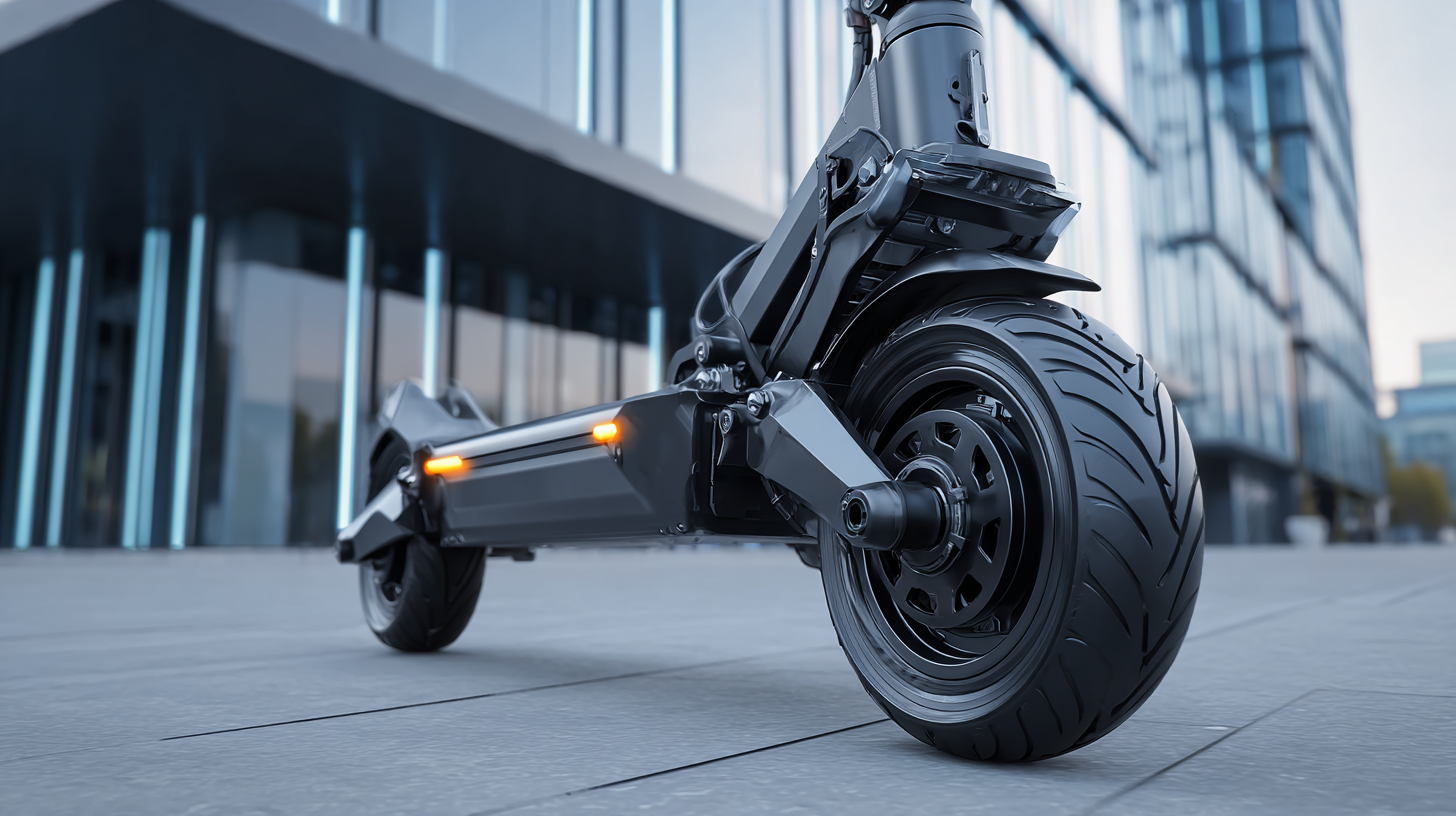The electric scooter market has witnessed exponential growth in recent years, with a projected market size of USD 55 billion by 2025, driven largely by the increasing demand for eco-friendly transportation solutions. Central to this transformation is the Electric Scooter Battery, which plays a critical role in defining performance, range, and overall user experience. According to a recent market report by Grand View Research, the global electric scooter battery market is expected to experience a compound annual growth rate (CAGR) of 8% through 2028. As urban mobility continues to evolve, key players are innovating battery technologies to enhance efficiency and sustainability, ensuring that electric scooters become a viable option for consumers worldwide. This blog explores the future of mobility, analyzing the transformative changes in the electric scooter battery landscape and their implications for global buyers.

The electric scooter battery landscape is poised for significant transformation as emerging trends in battery technology and market demand converge. Notably, the electric scooter market is projected to reach an impressive $408.1 billion by 2031. This growth is largely driven by the localization of electric scooter production in emerging economies and an increasing consumer preference for electric two-wheelers. As urbanization and traffic challenges rise, the demand for efficient and sustainable transport options continues to expand.
In addition to market growth, recent advancements in battery technology are reshaping the industry's future. Solid-state batteries are gaining attention for their potential to offer higher energy density and safety compared to conventional lithium-ion batteries. The second-life EV battery market is also expected to grow, reaching an estimated value of $4.2 billion by 2035, reflecting an increasing recognition of sustainability in battery usage.
These innovations are not only enhancing the performance of electric scooters but also addressing the supply chain challenges and component shortages that have previously hindered growth. With these trends, the electric scooter battery landscape is set to evolve, promising a more scalable and eco-friendly future for urban mobility.
China's Dominance in the Global Electric Scooter Market has positioned the country as a key player in shaping the future of urban mobility. As electric scooters surge in popularity due to their convenience and eco-friendliness, Chinese manufacturers have capitalized on this demand by producing high-quality, competitive models that are both affordable and efficient. Companies like Xiaomi and Segway have led the way, introducing innovative technologies and robust battery systems that enhance performance and extend riding range.

The impact of China's leadership in this sector extends beyond just manufacturing. It influences global supply chains, driving advancements in battery technology and fostering an ecosystem where electric scooters can be integrated seamlessly into smart cities. As international buyers seek to tap into this burgeoning market, the emphasis is increasingly on sustainable practices and energy-efficient solutions. The focus on improving battery life and reducing charging times will be critical as scooter usage continues to grow worldwide, making China’s role even more pivotal in the electrification of transportation systems globally.
The rapid growth of the electric scooter market is accompanied by significant concerns regarding battery sustainability and recycling. According to a report by the International Energy Agency (IEA), the number of electric scooters sold globally surpassed 40 million units in 2022, and this figure is expected to reach over 100 million by 2030. With this explosive growth, the issue of battery disposal becomes increasingly critical, as lithium-ion batteries can pose environmental risks if not managed properly.
Recycling initiatives are crucial in mitigating these environmental impacts. Research from the Environmental Protection Agency (EPA) indicates that over 95% of lithium-ion battery materials can be recovered and reused. Innovative recycling technologies can extract valuable materials such as lithium, cobalt, and nickel, which are essential for producing new batteries. In fact, a study published by the Battery Recycling Research Institute projected that implementing robust recycling programs could reduce the demand for raw materials by up to 50% by 2035, significantly lowering the carbon footprint associated with battery production.
This not only supports a circular economy but also aligns with global sustainability goals, encouraging manufacturers and consumers alike to prioritize responsible battery lifecycle management.
In the evolving landscape of electric mobility, battery performance stands at the forefront of innovation, shaping the future of electric scooters and other vehicles. As consumer demands for enhanced range, faster charging, and safety continue to escalate, the development of more efficient battery technologies becomes imperative. Recent advancements in sodium-ion batteries have emerged as a promising solution, offering a cost-effective and abundant alternative to traditional lithium-ion batteries. This innovation not only addresses the need for sustainable energy storage but also leverages the abundance of sodium resources, making it a viable option for lower-speed electric vehicles and large-scale energy management systems.

Furthermore, the drive towards technological independence is spurring significant progress in battery material science, particularly in separator technologies that are crucial for battery safety and efficiency. As electric scooter manufacturers and global buyers become increasingly focused on these innovations, the role of interdisciplinary research and collaboration becomes essential. By investing in groundbreaking solutions and enhancing battery infrastructure, the industry can unlock new possibilities for electric mobility, making it more accessible and appealing to a wider audience while contributing to the broader goals of sustainability and energy transformation.
The electric mobility sector is rapidly evolving, presenting both challenges and opportunities. According to a recent report by McKinsey, the global electric scooter market is projected to grow at a compound annual growth rate (CAGR) of 6.6%, reaching a valuation of approximately $27.1 billion by 2027. This surge highlights the increasing consumer demand for sustainable urban transportation solutions. However, the expansion of this market is not without obstacles, particularly concerning battery technology, which remains a critical factor in performance and consumer adoption.
One of the significant hurdles facing electric scooter manufacturers is the efficiency and lifespan of battery systems. The International Energy Agency (IEA) indicates that advancements in battery technology could cut costs by up to 50% over the next decade, promoting greater accessibility for buyers. Additionally, the challenge of recycling and sustainable sourcing of battery materials must be addressed to ensure environmentally friendly practices throughout the production lifecycle. As companies innovate to enhance battery performance and sustainability, they will not only improve the user experience but also contribute to broader environmental goals.
| Dimension | Current Value | Projected Value (2028) | Key Challenges | Opportunities |
|---|---|---|---|---|
| Global Electric Scooter Market Size | $18 billion | $30 billion | Regulatory hurdles, Safety concerns | Expansion in urban areas, Sustainable practices |
| Average Scooter Battery Life | 300 cycles | 500 cycles | Battery degradation, Lifespan variability | Advancements in battery technology |
| Average Charging Time | 4-6 hours | 1-2 hours | Infrastructure gaps, Slow chargers | Fast charging solutions |
| CO2 Emissions Reduction Potential | 1 million tons/year | 3 million tons/year | Public awareness, Behavioral change | Government incentives |
| User Adoption Rates | 15% in urban areas | 30% in urban areas | Cost, Convenience | Increased ride-sharing options |
